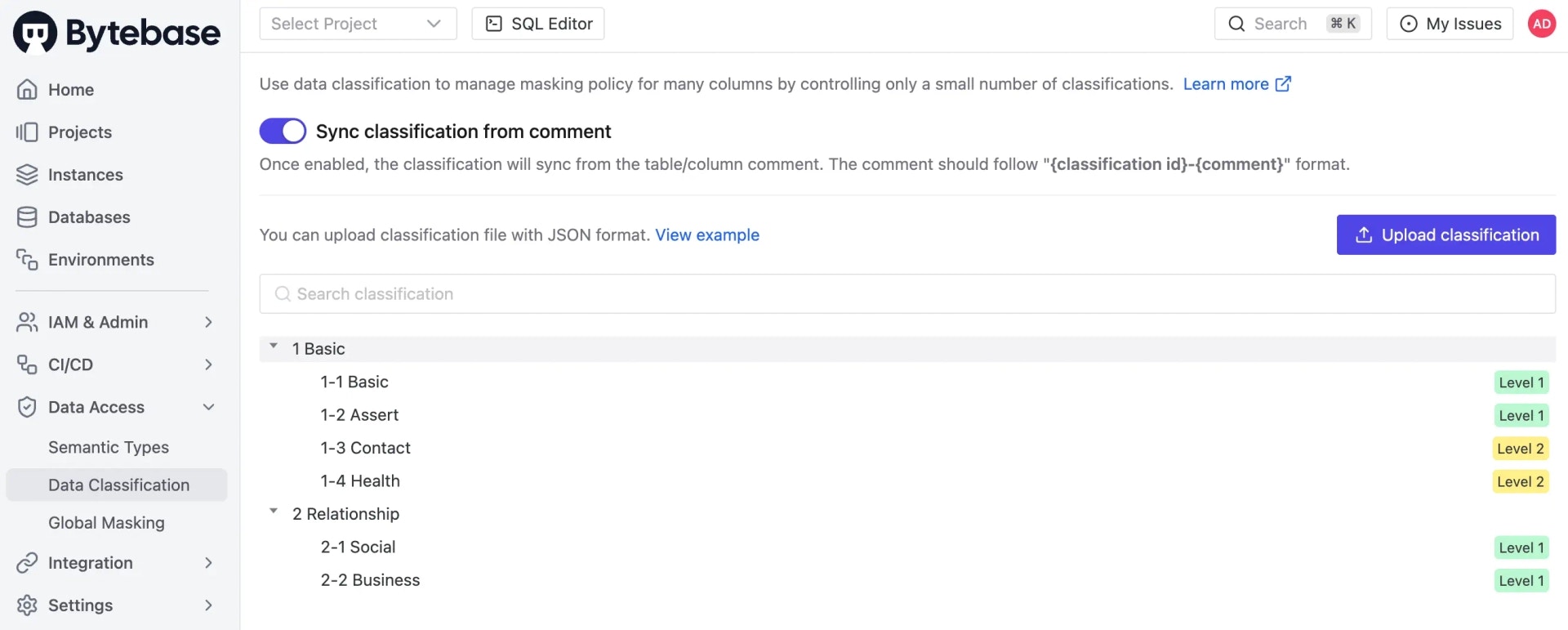This is Part 3 of our tutorial series on implementing automated database masking using GitHub Actions:
- Part 1: Semantic Type and Global Masking Rule
- Part 2: Column Masking and Masking Exemption
- Part 3: Data Classification (this one)
Overview
In this tutorial, you’ll learn how to automate data classification using GitHub Actions and the Bytebase API. This integration allows you to:- Manage data classification and global masking policy as code
- Automatically apply masking policies when PRs are merged
Data Classification
Data Classification allows you to manage masking policy for many columns by controlling only a small number of classifications.In Bytebase Console
Go to Data Access > Data Classification, you can upload the classification file.
In GitHub Workflow
Find the stepApply classification, which will apply the classification to the database via API. All the classifications should be defined in one file in the root directory as masking/classification.json. The code it calls Bytebase API is as follows:
masking/data-classification.json, creating a PR and merging, you can apply the classification. Go to Bytebase console, click Data Access > Data Classification, you can see the classification is applied.
Here in the github workflow, we also apply global masking rule and column masking with classification with files masking/global-masking-rule-classification.json and masking/databases/test-sample-instance/hr_test/database-catalog-classification.json.

